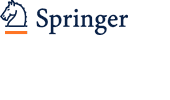

Comments: pdf
Ref.: The Effects of Noise on Aquatic Life: Principles and Practical
Considerations, Springer, July 2023
Abstract:
The level of noise in the ocean has been increasing in the last decades,
putting at risk a wide variety of marine species that rely on sound for their daily life.
An important tool for assessing, and eventually mitigating, the potentially harmful
effects of ocean noise on marine species are the so-called risk maps. Noise risk
maps result from the combination of noise pressure level distribution and species
density in the same time-space framework. A known drawback of the existing risk
map methodologies is that they do not allow for direct comparison of the degree of
risk between different periods of time, or locations, or between different species. The
present study proposes a Bayesian inference-based technique, as an alternative for
determining risk maps that return comparable and quantifiable absolute quantities. A
simulation of a shallow water seismic survey along the southwest coast of Portugal is
used to illustrate the proposed methodology. The test-case considered two periods of
the year (winter and summer), using as an example the common dolphin (Delphinus
delphis) species. The results show that risk maps obtained with the proposed method
favourably compare with those obtained with existing methods with, however, the
advantage of being based on mean absolute values. These results encourage its use
in future studies, targeting different species and/or different areas in order to give
some hints for the production of indicators to support ocean protection policies.